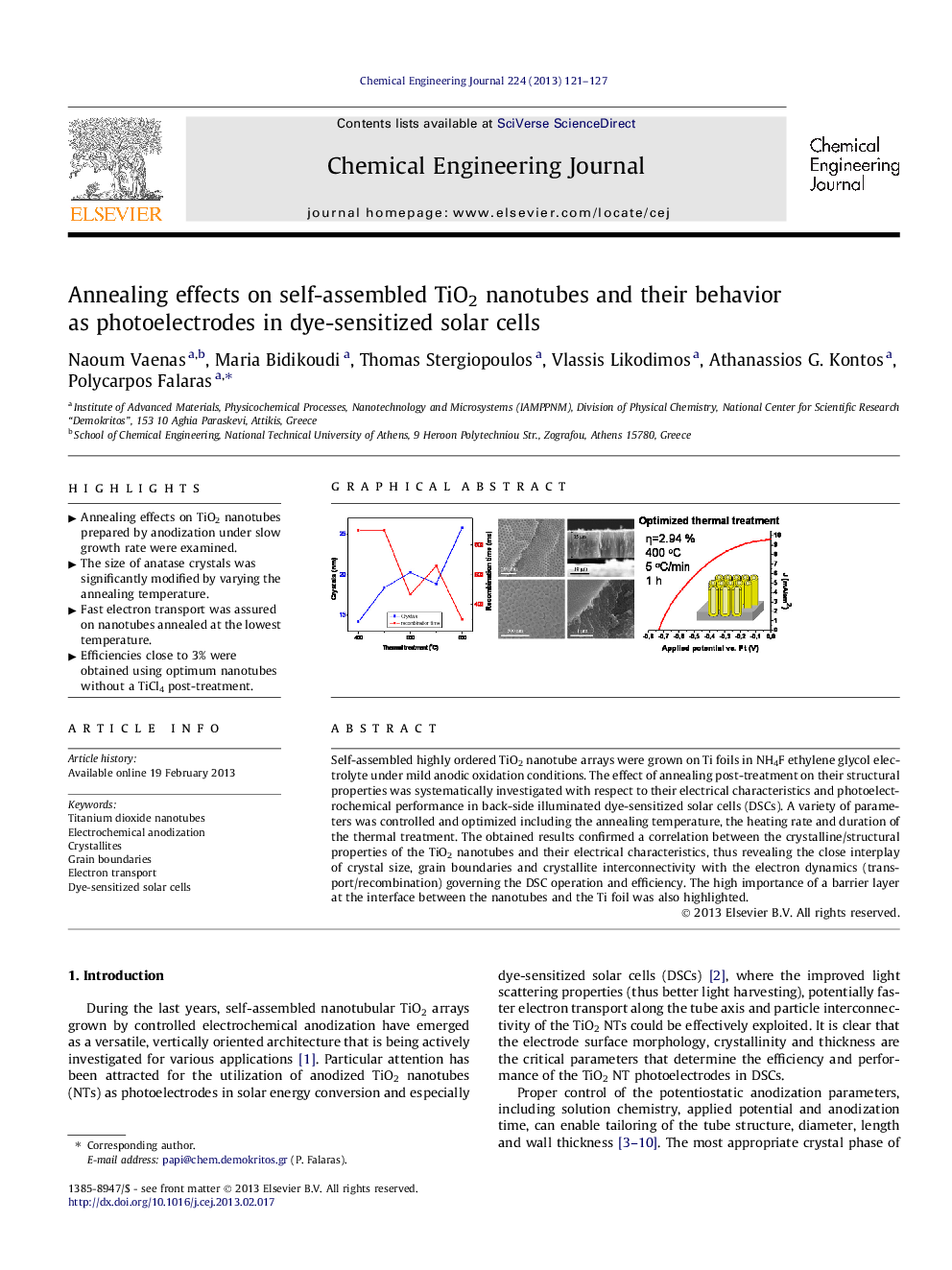| Article ID | Journal | Published Year | Pages | File Type |
|---|---|---|---|---|
| 148510 | Chemical Engineering Journal | 2013 | 7 Pages |
Self-assembled highly ordered TiO2 nanotube arrays were grown on Ti foils in NH4F ethylene glycol electrolyte under mild anodic oxidation conditions. The effect of annealing post-treatment on their structural properties was systematically investigated with respect to their electrical characteristics and photoelectrochemical performance in back-side illuminated dye-sensitized solar cells (DSCs). A variety of parameters was controlled and optimized including the annealing temperature, the heating rate and duration of the thermal treatment. The obtained results confirmed a correlation between the crystalline/structural properties of the TiO2 nanotubes and their electrical characteristics, thus revealing the close interplay of crystal size, grain boundaries and crystallite interconnectivity with the electron dynamics (transport/recombination) governing the DSC operation and efficiency. The high importance of a barrier layer at the interface between the nanotubes and the Ti foil was also highlighted.
Graphical abstractFigure optionsDownload full-size imageDownload as PowerPoint slideHighlights► Annealing effects on TiO2 nanotubes prepared by anodization under slow growth rate were examined. ► The size of anatase crystals was significantly modified by varying the annealing temperature. ► Fast electron transport was assured on nanotubes annealed at the lowest temperature. ► Efficiencies close to 3% were obtained using optimum nanotubes without a TiCl4 post-treatment.
